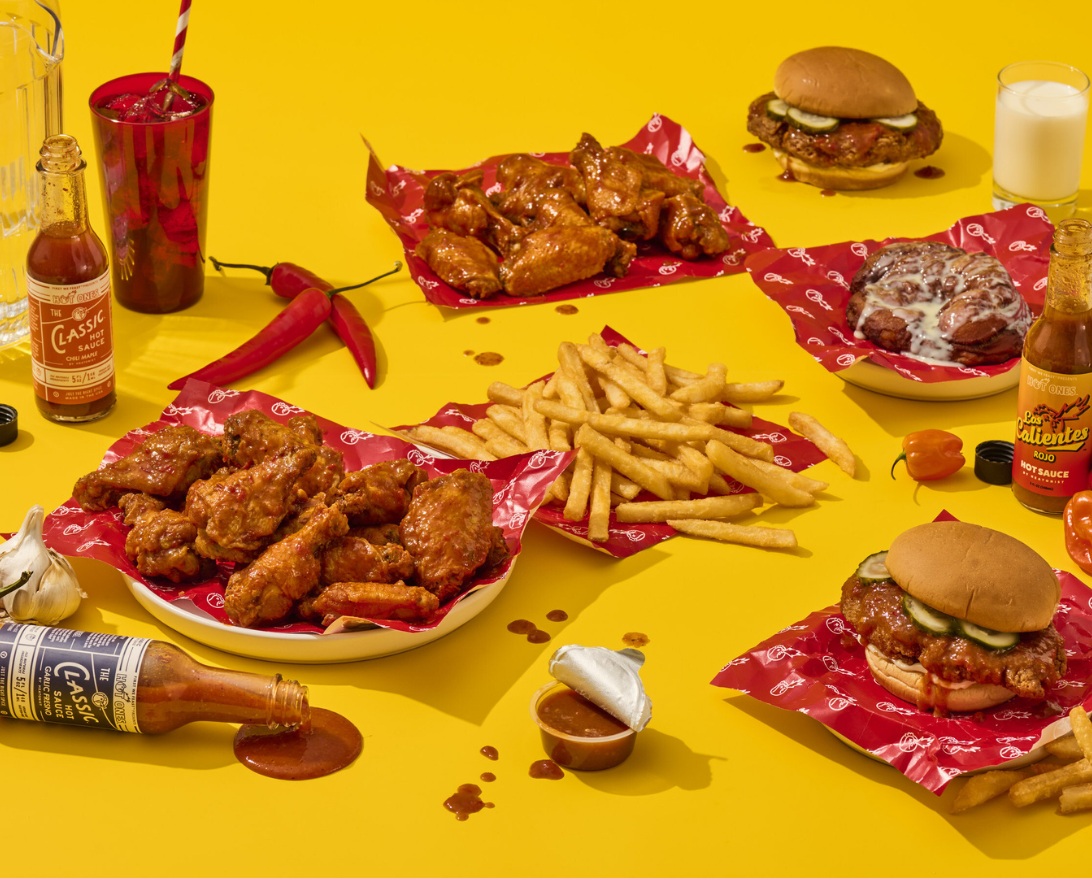Sign up for restaurant insights
Convenience stores are everywhere — you’ll find them tucked into city blocks, perched on corners in small towns, and located next to shopping centers in suburban areas. How do all these businesses thrive? The value proposition is right there in the name: It’s all about convenience. Customers love the ability to pop in and pick up a few items without the hassle of navigating a full-size grocery store.
If you’re looking for a new business idea, a convenience store could be a profitable option. After all, there’s always a market for household goods and grocery items. First, however, it’s important to understand how the process works.
The pros and cons of owning a convenience store
As with any business venture, being a convenience store owner has both pros and cons. Before you draw up a business plan, it’s important to consider both and decide whether the advantages outweigh the drawbacks for your location and personal situation.
Pros of opening a convenience store
- Freedom to be your own boss
- Control over work environment and employee management
- Lower startup costs and operating costs than a large grocery store
- Opportunity to become an integral part of a neighborhood
- Chance to create jobs for locals
- Potential to use Grubhub tools for marketing and delivery
Cons of opening a convenience store
- Success requires a thoughtful, detailed business plan
- Long hours, especially before you hire employees
- Challenging inventory management for fresh grocery items
- Can be physically demanding
- High overhead expenses for a small business
- Can be challenging to build brand visibility in a crowded market
How to open a convenience store: Steps to follow
As with any brick-and-mortar business, it takes a great deal of advance planning to figure out how to open a convenience store. A measured, thoughtful approach can help you build a thriving, long-lasting business.
Step 1: Conduct market research
Research your local area in detail. How many convenience stores are there? Can the market support another option? Where do customers need a store most? Collect this information using:
- Customer surveys
- One-on-one interviews
- Chamber of Commerce data
Once you understand what customers need, analyze potential competitors to identify their weaknesses and find market opportunities. This process can help you determine how to differentiate your convenience store in terms of products, design, branding, and customer experience.
Step 2: Determine the right business model and develop a business plan
If your local area is ready for another convenience store, it’s time to select a business model that works for you. There are three standard options:
- Buy an existing business. This option typically comes with a supplier network and a customer base — and possibly even extra features, such as a gas station. It’s the fastest way to get up and running, but it will likely come with a high price tag.
- Open a franchise. As a franchise owner, you’ll usually receive support for finding properties, purchasing inventory, and marketing your store. You’ll benefit from the existing brand awareness, but you’ll pay a percentage of your profits to the parent company as part of the franchise agreement and give up control over design, products, and branding.
- Start an independent convenience store. This option gives you complete control; if you’re skilled at negotiation, employee management, and other practical aspects of business ownership, it can be a great way to design a convenience store that meets your needs and those of your customer base.
With your convenience store business model in mind, write a business plan that lays out the following:
- Store description and concept
- Business goals and objectives
- Unique selling proposition
- Organizational structure
- Product overview
- Operational description
- Financial projections
- Legal structure
- Marketing plan
Step 3: Choose a central location
The right location is critical to the success of your convenience store. Look for properties that have a central location, ample parking, and easy road access. The entrance should be highly visible from the sidewalk and the street.
When choosing a property, you have two main options:
- Buy or lease a commercial building. Because convenience stores don’t have complicated plumbing or equipment requirements, retrofitting an existing commercial space is relatively straightforward.
- Purchase a property and build a store. If you have adequate funding, this option offers maximum flexibility and customization. Just make sure the land is located in a high-traffic area to ensure visibility and a steady flow of customers.
Step 4: Secure licenses and permits
Apply for all the permits and licenses you need to run a convenience store in your city. These vary by location but often include:
- Business license
- Retail food store license
- Sales tax ID
- Liquor license
- Health permit
- Occupancy permit
- Employer identification number (EIN)
- Construction permit
Depending on your offerings, you might also need permits or licenses to sell lottery tickets, tobacco products, and prepared food.
Step 5: Plan your store layout
The layout of a convenience store affects both revenue and the customer experience. Here are some ways you can use layout to encourage larger orders and repeat business:
- Put shopping baskets near the front entrance.
- Allow ample space in each aisle.
- Group products by category.
- Use aisle and shelf signs to help customers navigate.
- Place popular products close to eye level.
- Create an “impulse-buy” section near the register.
- Separate coolers and grab-and-go sections to minimize crowding.
The easier it is for customers to move through your store and find the products they need, the more likely it is they’ll return again and again.
Step 6: Select suppliers and stock inventory
Determine what you want to stock in your convenience store. Consider that customers often run into these stores to pick up basic ingredients, such as milk or butter. You can stock a few specialty products that appeal to your local audience, but the bulk of your inventory should be focused on household staples.
Once you have a list of products, look for suppliers that stock the brands and items you need. If storage space is limited, you’ll probably need more frequent deliveries; make sure your vendors can accommodate your schedule.
Step 7: Hire and train staff
Take out job listings on local employment websites; you can also post jobs on social media and in print publications. Because convenience stores are small, employees often handle a wide range of tasks. Make sure to train each new person in duties such as:
- Running the cash register
- Cleaning and organizing the store
- Restocking shelves and coolers
- Preparing hot foods
- Basic accounting and cash handling
- Opening and closing the store
Step 8: Implement marketing and promotions
Before you open, take time to build awareness for your new convenience store. Aim for a mix of digital and print marketing and advertising strategies:
- Set up a Google Business profile.
- Build a website with your hours and basic store information.
- Advertise in local newspapers.
- Run radio and TV ads.
- Build social media profiles and post regularly.
Sales and promotions can help you get customers through the door, particularly in the early days. To encourage repeat business, set up a loyalty program that rewards shoppers with discounts or free items after a certain number of purchases.

Step 9: Manage operations and growth
Once your store is up and running, you can focus on inventory, marketing, staff management, and accounting. Look for opportunities to boost business and improve your operations to meet customers’ needs. If you’re successful, you might find opportunities to expand the business and open additional locations.
Is owning a convenience store profitable?
Convenience stores can be profitable businesses. In 2023, the convenience store market brought in $44.8 billion in revenue. The industry has been growing steadily over the past 5 years, increasing by an average of 2.8% annually.
Of course, market size doesn’t guarantee success; to make a profit, you’ll need to adapt the business to suit the needs of your customers. You might start by stocking the store with popular items such as hot coffee, grab-and-go foods, dairy products, and toiletries. Effective supply chain management is critical — when you build strong supplier relationships and adjust your ordering strategy to match demand, it helps ensure products are always in stock.
You can also increase revenue in a convenience store business by:
- Maintaining a clean and pleasant atmosphere
- Stocking frequently requested products
- Building relationships with customers
- Hiring fast and friendly staff
Offer grocery delivery through Grubhub
After you open a new convenience store, grocery delivery is one way to attract new customers and bring in more revenue. There’s no need to hire drivers and manage logistics — Grubhub can provide fast, reliable delivery on an as-needed basis. Our cutting-edge platform offers easy, secure transactions, and our marketing resources help you build brand awareness. And because Grubhub has more than 33 million existing customers, you can get your new business in front of a large, eager audience.Want to learn how Grubhub’s delivery services can benefit your bodega or convenience store business? Reach out to our team with questions, or get started with Grubhub today.






